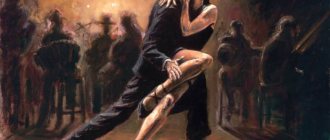Medieval performances
What is obsession anyway? This concept is defined as a state of complete subordination of the individual’s mind to one idea, one feeling. In the religious understanding, possession occurs due to the introduction of a certain alien entity into a person’s body. Many sources, before interpreting the word, clarify that this is a term of medieval and folk medicine, thereby immediately dotting the i’s: in modern psychology such a disorder does not exist.
And indeed, what the clergy considered (and still consider) as signs of possession, in most cases, are symptoms of a certain disease.
- Epilepsy: convulsions, loss of consciousness, peculiar sounds during seizures, a feeling of contact with the intangible after them, ideas or revelations received during this contact.
- Tourette's syndrome: a disorder of the nervous system, the main symptom of which is multiple motor tics. In rare cases, this pathology is characterized by such an unusual symptom as coprolalia - an irresistible desire to swear obscenely for no reason.
- Bipolar affective disorder: severe mood swings - from euphoria to deep depression.
- Split Personality: There are several personalities in one body at the same time, but only one of them is active at a particular time. A person acts like different people with different life experiences, characters, tastes, ideas, habits.
- Schizophrenia: hallucinations, delusions, speech impairment.
- Hysterical personality disorder: theatrical behavior, exaggerated demonstrative expression of emotions.
This list is far from complete: many, many more symptoms of mental pathologies may look as if a person is really controlled by something that has taken over from the outside. If we consider that most of these symptoms are unknown to non-specialists, and deeply religious people tend to see in any situation the manifestation of the will of higher powers, it becomes clear why in the 21st century the idea of possession as a condition caused by a supernatural entity that has penetrated the human body is so widespread.
Symptoms
The main symptom of a person's obsession is the loss of a sense of identity. The patient ceases to be aware of the surrounding reality. His behavior changes. Signs of obsession include a limited range of movements, loss of control over the body, seizures, disturbances in body temperature, changes in the timbre of the voice, and so on. Diagnosis of the disease in this case is difficult: a fairly wide range of diseases are accompanied by similar manifestations.
“I knew only one thought, power, one but fiery passion...”
What if something did penetrate the body, but not a demon or demon, but a thought that absorbs the entire being, an idea that gives no rest day or night?
Or rather, not quite into the body, but rather even into the soul? Many people are familiar with the expression “idée fixe,” but few know that this is a real psychological term introduced into science by the German psychiatrist Karl Wernicke.
We recommend: Personality dissociation is
A fixed idea (or an overvalued idea) is a judgment derived from the real experience of an individual, which is accompanied by strong emotional stress and dominates all other judgments. There are four important criteria for diagnosing a highly valuable idea:
- Firstly, the idea occupies an unconditional first place in the human psyche. The Third World War may begin, relatively speaking, but for a person his idea will still be more significant - again, relatively speaking, to breed a new breed of cats.
- Secondly, the emotional component that accompanies a highly valuable idea is clearly expressed: its experience, successes and failures associated with it always evoke a strong emotional response.
- The third sign determines the main difference between an overvalued idea and similar mental pathologies: delusions, paranoia, obsessions. The fix idea is always based on a real event, even the smallest, most ordinary, or one that happened in the distant past. This is always a refraction of the specific experience of a particular person. There is no feeling of foreignness of thoughts or imposition from the outside.
- Fourthly, the patient retains critical thinking (or glimpses of it), and correction with the help of psychotherapy can produce tangible results. This is another difference between a fixed idea and delusion: with it, the patient is not able to objectively evaluate his judgments.
Among the most common overvalued ideas are hypochondriacal (the tendency to see a serious illness in the slightest ailment), ideas of jealousy, invention, reform, and others. An interesting phenomenon is phantom pregnancy syndrome, which occurs in women with a fixed idea of becoming a mother.
With it, a woman observes all the signs of pregnancy (nausea, changes in taste preferences, an enlarged abdomen), but in reality there is no embryo in the uterus! There is no specific treatment for fixed ideas - antidepressants and various types of psychotherapy are used.
Some personality types are more susceptible to having over-valued ideas than others. If we use the terms of the theory of accentuations, then such individuals include paranoid and schizoid types. Accentuation is an extreme degree of expression of certain character traits, located on the border of normality and pathology, which makes it more likely to predict the occurrence of some mental disorders than others.
We recommend: What does aggravation mean?
So, one of the main features of the paranoid type, which makes him so vulnerable to overvalued ideas, is inflated self-esteem. And from this, such people derive confidence in the unconditional importance of their judgments, the necessity of their actions - fertile ground for the emergence of an idea fix.
The schizoid type, among other things, is characterized by isolation from reality, concentration on and passion for one’s internal experiences, unusual hobbies and professions - these traits determine a predisposition to highly valuable ideas.
An overvalued idea must be separated from the fruitful obsession with a task that possesses a person who is focused on his work and is completely devoted to it. How many great discoveries the world would have missed if it were not for scientists obsessed with one idea, who literally devoted their lives to their research. Although, of course, there is a flip side to the coin: obsession with a task can both lead to unprecedented success and cause bitter disappointment in case of failure.
State of obsession
To better understand what obsession is, it is worth imagining an experience in which a person perceives his gestures and voice as belonging to someone else. As a rule, we are talking about their manifestations with negative characteristics. There is a feeling of external intrusion or external control. These external forces are usually malevolent, hostile and disturbing. Sometimes they talk about the demon inside. Doctors often encounter voices in the patient's head.
The mechanism for the occurrence of this unusual and difficult to explain phenomenon is associated with the separation of some part of the “I” and its suppression in the subconscious. Types of obsession differ from each other in varying degrees. Obsessive states are the result of painful traumatic life experiences, most often childhood abuse, and are considered a creative form of coping with intractable situations.
People experiencing this type of crisis have a clear feeling that their soul and body have been taken over and controlled by beings or energies that are distinguished by their individual personal characteristics. They perceive the “invaders” as a hostile and subversive element that came to them from outside. It seems to them that a being without a body, a demonic entity, or an evil person who has captured them with the help of black magic is acting inside them.
When understanding the definition of obsession, one must take into account that it is characterized by serious manifestations of both an antisocial and criminal nature: aggression, depression, sexual promiscuity, excessive use of alcohol and drugs. Only after the start of psychotherapy does the obsession with the face begin to subside.
During the experience of seizures, the patient may suddenly begin to jump around in convulsions, show a semblance of a devilish face with his face, and roll his eyes to give his face a wild expression. The hands and body twitch in strange positions, the voice changes completely, it sounds as if from another world.
Strikingly, this may be reminiscent of the experience of “exorcism” in the Christian church or the rites of exorcism in various indigenous cultures. The seizure often resolves only after sudden vomiting, vigorous physical activity, or even temporary loss of control. These states can also be of a healing, transformative nature, and sometimes lead to a deep spiritual transformation of the person. This is typical for epileptics.
Sometimes the possessed person thinks a lot about the presence of alien beings and resists them with all his might. This situation arises completely spontaneously in everyday life - in the form described. Then, as a rule, this is accompanied by severe fears, and the patient feels despair: relatives, friends and often even doctors tend to reject him.
The behavior of the possessed person is reacted to with a strange mixture of fear and moral condemnation. Often such people were called intermediaries of evil forces, and they refused to enter into any contact with them.
The disgusting archetype is a transpersonal entity, it represents a negative mirror image of the divine. It often seems that we are talking about a paranormal phenomenon. The patient can be helped by a person who cannot be intimidated by the unusual nature of this condition, who will be able to maintain the patient’s full consciousness in order to dispel his feeling of negative energy. This is how cases of healing arise.
Path to Healing
The girl began to look for the path to healing in faith. Depression and aggression showed no signs of improvement. Anna-Lisa complained that she continued to feel as if someone else was looking at her. She saw things and ghosts that no one noticed. She began to pray, and was increasingly convinced that help could only come through spiritual life. Her family believed that this was truly the only possible path. During a religious pilgrimage in Italy, a girl refused to look at the image of Christ. The priest Ernst Alt began to take an interest in her, finding out that this was an obsession. He began to pray with her. Exorcists were also interested in her, finding out that it was an obsession.
Soon the girl refused food and liquid, her depression worsened, and her aggressiveness grew. The voices told her that she was corrupted, cursed, and would end up burning in hell. The parents began going to all the church institutions where demons were cast out, and their story reached the Vatican. In 1975, the rite of exorcism was performed according to the Roman canon. Anna-Lisa refused food and liquid, during the ritual she refused a glass of water, but after a while she drank her own urine from a container.
More and more uncontrollable fits of rage appeared in her, when she attacked people around her and objects that came to her hand. There were signs of hyperactivity as she began to throw herself into the air and throw herself on the ground. Reactions to the ritual of exorcism varied in intensity and strength. Several times the girl spoke in strange voices and in foreign languages that she did not have the opportunity to learn. Exorcists counted 6 demons in it. They called them Cain, Judas, Nero, Lucifer, Hitler, and there was an unknown demon.
For the period from 1975 to 1976. More than 60 sessions were held. Some required up to four hours, with at least two rituals performed over the course of a week. Anna-Lisa stopped all other types of treatment of her own free will; the doctors could not convince her of the need for medical therapy. Her parents supported her, and so the possessed woman surrendered only to the hands of exorcists. During the sessions, she cursed Christ and all the saints. Her physical condition was getting worse, but the exorcists continued. During the ritual, the exorcist noticed that Anna-Lisa reacted most of all to holy water, howling and suffering, trying to bite everyone around her. Her condition was able to improve by October 1975. Then the visions changed to positive ones, until finally they stopped completely.
Nevertheless, the girl increasingly said that she could not be helped. She said that she must die to atone for the sins of all the young. From now on she refused the doctor, food and any attempts at treatment. During a priest's visit on June 30, 1976, she whispered, asking for absolution, which the Holy Father granted her. The next day, July 1, 1976, she breathed her last.
Her story became popular and is considered an example of stories about possession. It's all documented. More than one film has been made based on the story of Anna-Lisa; most people consider the concept of obsession based on it.
Heroic superpowers? No, kiss the abyss!
A person changes not of his own free will - a strong and ancient evil takes up residence in him, capable of enslaving the subconscious of its victim. The demon does not completely replace the person (this can be guessed from the unchanged memories of the “patient”), but it changes his character, influences his words and actions, and the further, the more powerful.
The presence of such an evil entity is indicated by the following signs:
- fear or hatred of religion - ridicule, refusal to wear a cross, attempts to avoid communication with the priest, fainting in church;
- doubled, superhuman strength - thanks to demonic energy, the possessed easily move furniture, even huge closets full of clothes;
- a dramatic change in intelligence (it is curious that different demons influence the brain of their victim differently - in one case a person becomes stupid and shuts down, in another he shines with intelligence, directing it against his family), less often such people begin to speak languages previously unknown to them;
- mystical abilities that seem to appear out of nowhere - the possessed sometimes see spirits, predict the future, and “successfully” practice witchcraft;
- nightmares, less often insomnia - if during the day a person does not feel a demon in himself, then at night the “sick” is covered in cold sweat, feeling someone’s gaze, cold eyes on himself (people often dream that a dangerous entity is standing next to the bed);
- changed voice (a rough, low tone of voice or even a growl appears during anger or attacks of aggression);
- painful appearance - the demon sucks the vitality out of a person, outwardly this is manifested by migraines, disappeared appetite, apathy, sunken eyes, deathly pallor.
It is important to convince the possessed person to contact a priest. The demon himself will not go anywhere. And, of course, your psychological persuasion (“Don’t quarrel with your father”, “Stealing is bad”) will not work, no matter how correct and logical they are.
If you feel uncomfortable in the company of such a person, you should not run away, much less get angry - pray silently, and the demon next to you will become quiet - he will be afraid of the Lord.
By the way: possessed people are not always evil. The entity often leaves a person for a while (most likely, in order not to be “driven to the next world” too quickly, without allowing him to sin enough). On such days, the “sick” behaves as if he has come to his senses - he apologizes, tries to make amends, stops drinking... But then the demon returns, and the person again plunges into the cycle of sin and evil.
How does a possessed person behave in church?
Surely you have seen in the media or read or heard about cases of possessed people appearing in churches. Indeed, in churches demon possession manifests itself most clearly. A person is literally possessed by a “devil,” and this entity experiences tremendous pain near holy places.
It is enough to show the demoniac a cross or an icon, and he will have a seizure. In church, such people begin to behave like crazy people during worship. They rush about, howl, cry, swear, shout curses at God.
Obsession: the devil or a mental disorder?
Scientists and supporters of a religious view of the problem have been arguing for a century that this is an obsession. The story of the most famous possessed woman in history, Anna-Lisa, is indicative. She was born in a Bavarian village in 1952. Her entire family was believer, the girl was raised in Catholic traditions.
In her large family there was a tradition that one of the family members always worked in the spiritual field. The young girl was truly close to faith in God. Prayers and going to church were her top priority, and there must have been good reason for skipping these activities. Anna-Lisa was a very successful girl at the local grammar school and her teachers remember her as a modest and intelligent girl. Already while studying at the gymnasium, she wanted to become a teacher. Continuing her studies at the Faculty of Education became key for this girl. She was destined to shed light on the world that this is an obsession. And also open a new milestone in the study of this phenomenon.
Beginning of the disease
To understand that this is an obsession, it makes sense to consider how such an illness develops using a classic example - the documented story of Anna-Lisa. Already while studying at the gymnasium, the first problems began to appear. At first, the girl developed mood swings, aggression or depression. It took quite a long time for parents and teachers to start doing this because she never had conflicts in the team. She was a fairly quiet girl that no one paid much attention to. It has never been proven, however, that she was the target of bullying or humiliation from classmates or anyone else, which could have contributed to her psychological problems.
More serious interest in her state of health appears only after she overcame her first epileptic seizure. Before this, the girl complained of frequent headaches, had an aversion to food, suffered from insomnia, but there were also more terrible symptoms. She heard strange sounds and voices that no one else had heard, and complained that she began to see unfamiliar faces in her dreams and in reality. Hallucinations bothered her; very often she complained about disgusting odors that no one could smell. Anna-Lisa said that she was surrounded by dark forces that frightened him so much that sometimes she could not even take a breath.








